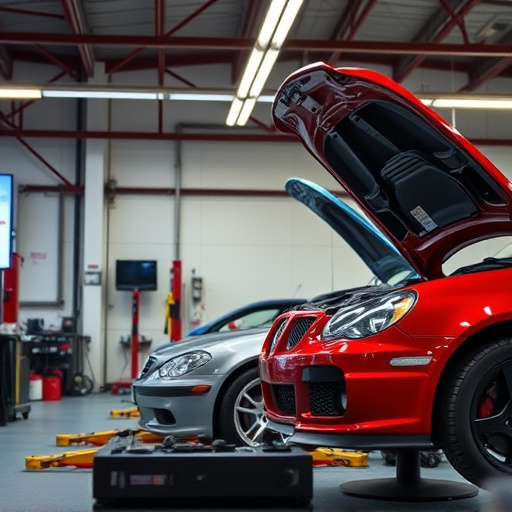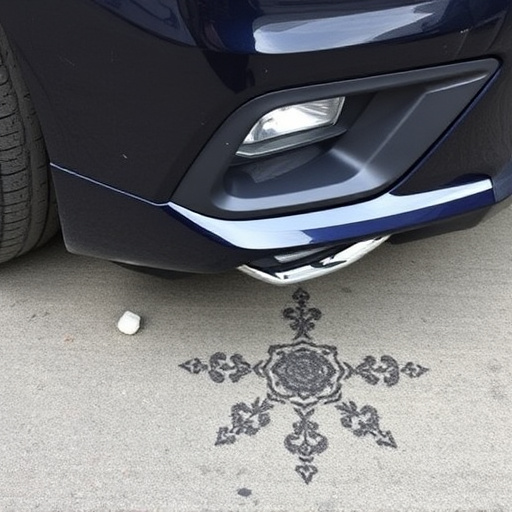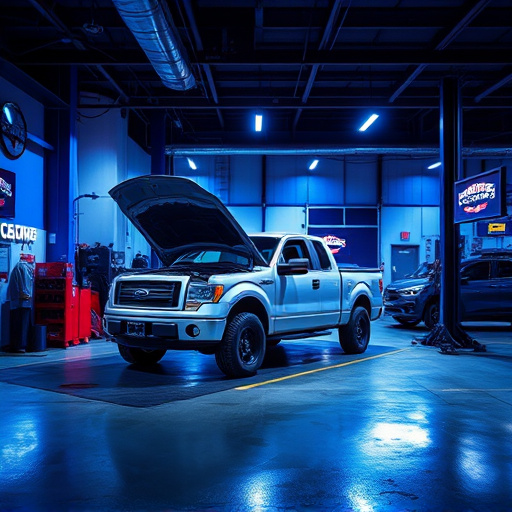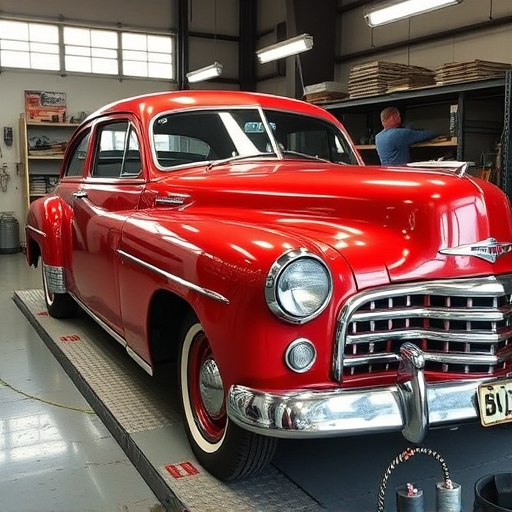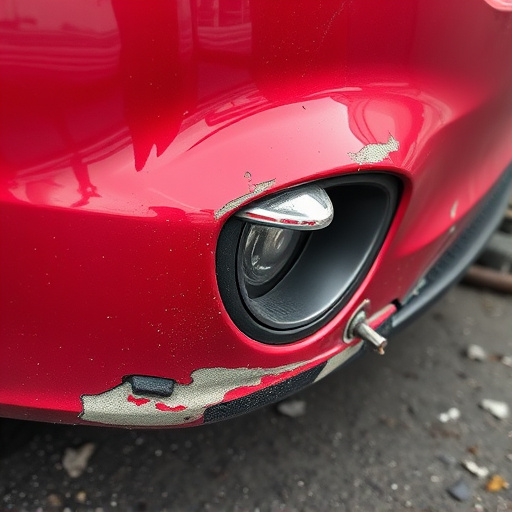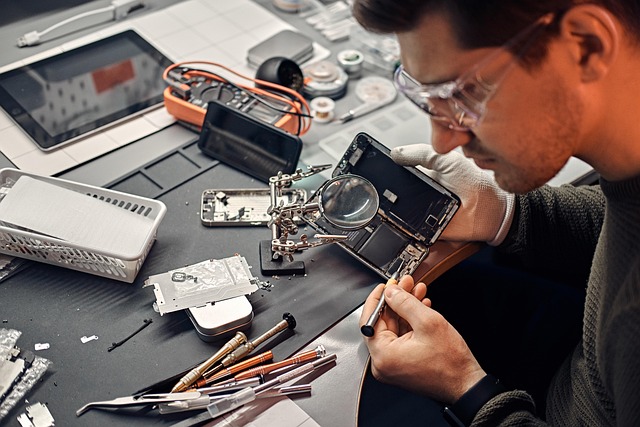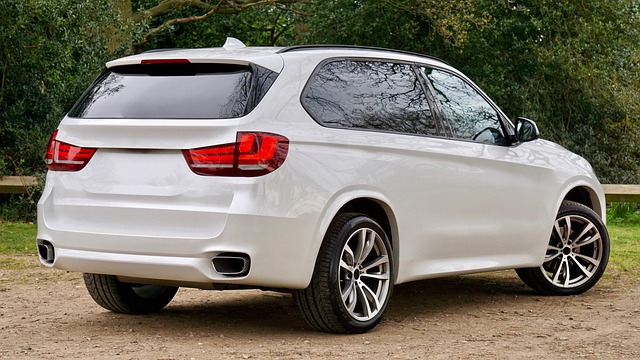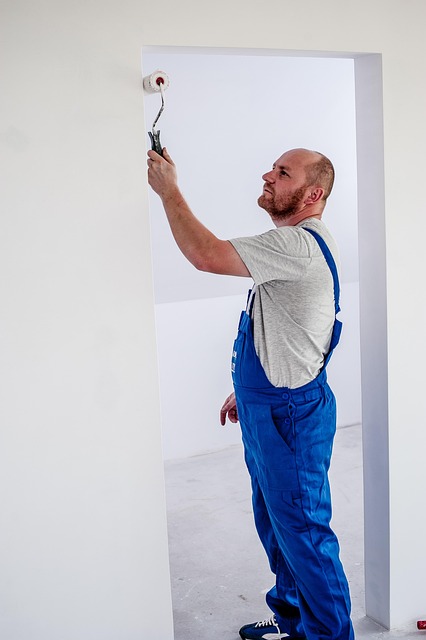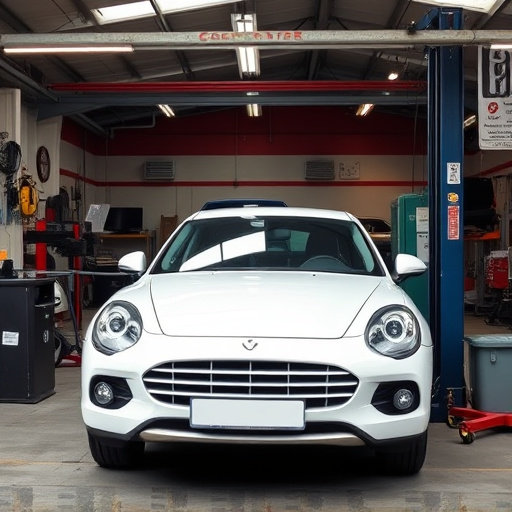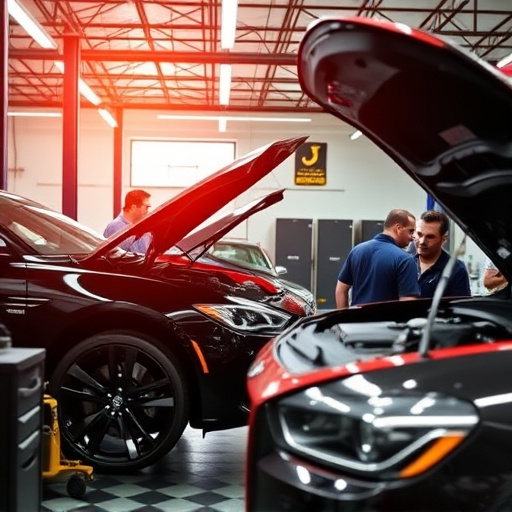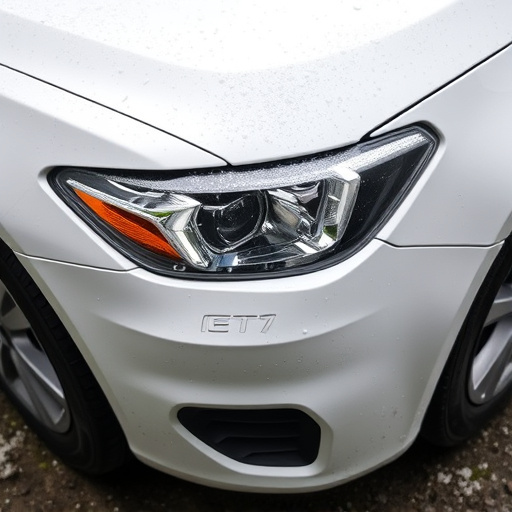Electric vehicles (EVs) pose unique challenges for auto frame repair due to their integrated battery packs and motor systems, which are deeply embedded in the vehicle structure. Unlike conventional cars, damage to EVs can have significant structural impacts, affecting critical components like battery packs and electric motors. Specialized equipment, techniques, diagnostic tools, and advanced training are required to ensure safe and precise repairs, emphasizing the need for EV-specific collision centers equipped to handle these evolving demands.
The rise of electric vehicles (EVs) brings unique challenges for auto frame repair, demanding specialized skills and knowledge from technicians. Unlike conventional vehicles, EVs feature advanced battery packs and motor systems integrated into their frames, making structural repairs complex. This article delves into the intricacies of EV frame repair, exploring structural differences, advanced diagnostic techniques, specialized repair methods, and the critical need for compatible parts and safety protocols in this evolving industry.
- Understanding the Unique Challenges of Electric Vehicle Frame Repairs
- – Discussing the structural differences between electric and conventional vehicles
- – Highlighting the presence of advanced battery packs and motor systems
Understanding the Unique Challenges of Electric Vehicle Frame Repairs

Electric vehicles (EVs) present unique challenges when it comes to auto frame repair compared to their internal combustion engine counterparts. The absence of a traditional engine compartment means that damage to the frame, which might be minor in conventional cars, can have more significant structural implications for EVs. For instance, any misalignment or deformation can affect crucial components like battery packs and electric motors, posing potential safety hazards.
Repairs in these vehicles often require specialized equipment and techniques tailored to their advanced design and technology. Auto collision centers specializing in EV repairs need to invest in modern diagnostic tools capable of accurately identifying issues within the complex electrical and mechanical systems. Moreover, car body repair techniques must consider the unique materials used in EVs, such as lightweight composites, ensuring precise restoration without compromising structural integrity.
– Discussing the structural differences between electric and conventional vehicles
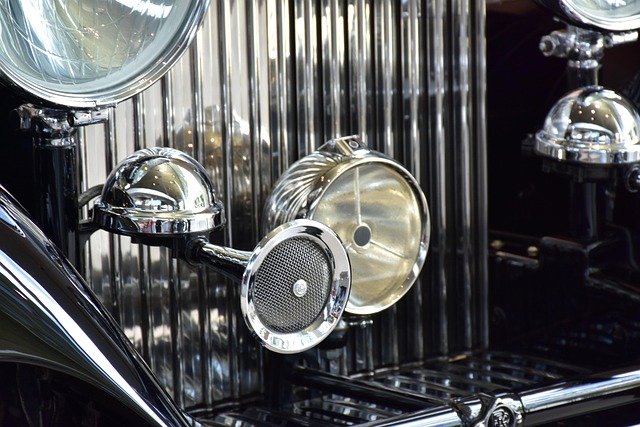
Electric vehicles (EVs) present unique challenges for auto frame repair compared to their conventional counterparts. While both types of vehicles share a basic skeletal structure, EVs have distinct differences that impact repair processes. One key difference lies in the battery pack, which is often integrated into the vehicle’s chassis, requiring specialized knowledge and equipment for safe disassembly and reassembly without compromising structural integrity.
Additionally, EVs tend to have lower body panels due to the placement of batteries and motors, making car body repair more intricate. Unlike conventional vehicles where frame damage can be more straightforward to fix, EV frames often demand precise alignment and sophisticated welding techniques to ensure structural stability and maintain the vehicle’s overall performance. This calls for highly skilled technicians and advanced equipment tailored for electric vehicle repairs at collision repair centers, addressing challenges unique to this evolving automotive landscape.
– Highlighting the presence of advanced battery packs and motor systems
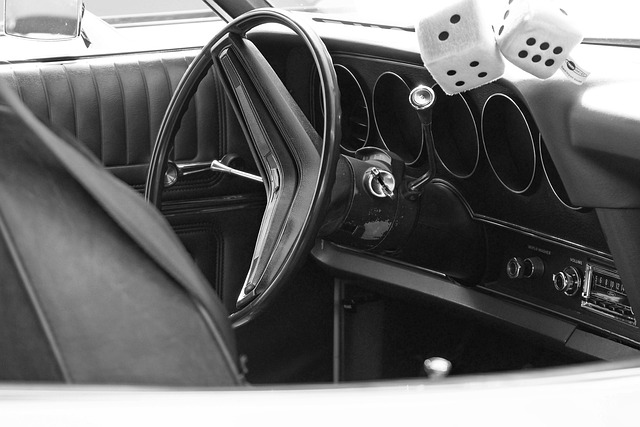
Electric vehicles (EVs) present unique challenges for auto frame repair due to their advanced battery packs and motor systems. Unlike traditional internal combustion engines, these components are integrated deeply into the vehicle’s structure, making any damage or misalignment more complex to address. For instance, high-voltage batteries require specialized handling and replacement procedures to ensure safety and prevent electrical faults.
The intricate layout of EVs demands that collision repair shops offer not just car paint services but also possess the technical expertise to precisely realign frames and components. This involves sophisticated diagnostic tools and trained technicians who understand how to mitigate potential risks associated with high-voltage systems. As EV adoption continues, collision repair professionals must stay updated on these advancements to provide effective and safe auto frame repair for electric vehicles.
The shift towards electric mobility presents unique challenges for auto frame repair, particularly in addressing structural differences compared to conventional vehicles. The complex integration of advanced battery packs and motor systems requires specialized knowledge and equipment. As EV technology continues to evolve, so must the skills and resources of repair professionals to ensure proper and safe frame repairs, maintaining the integrity and performance of these innovative vehicles.
